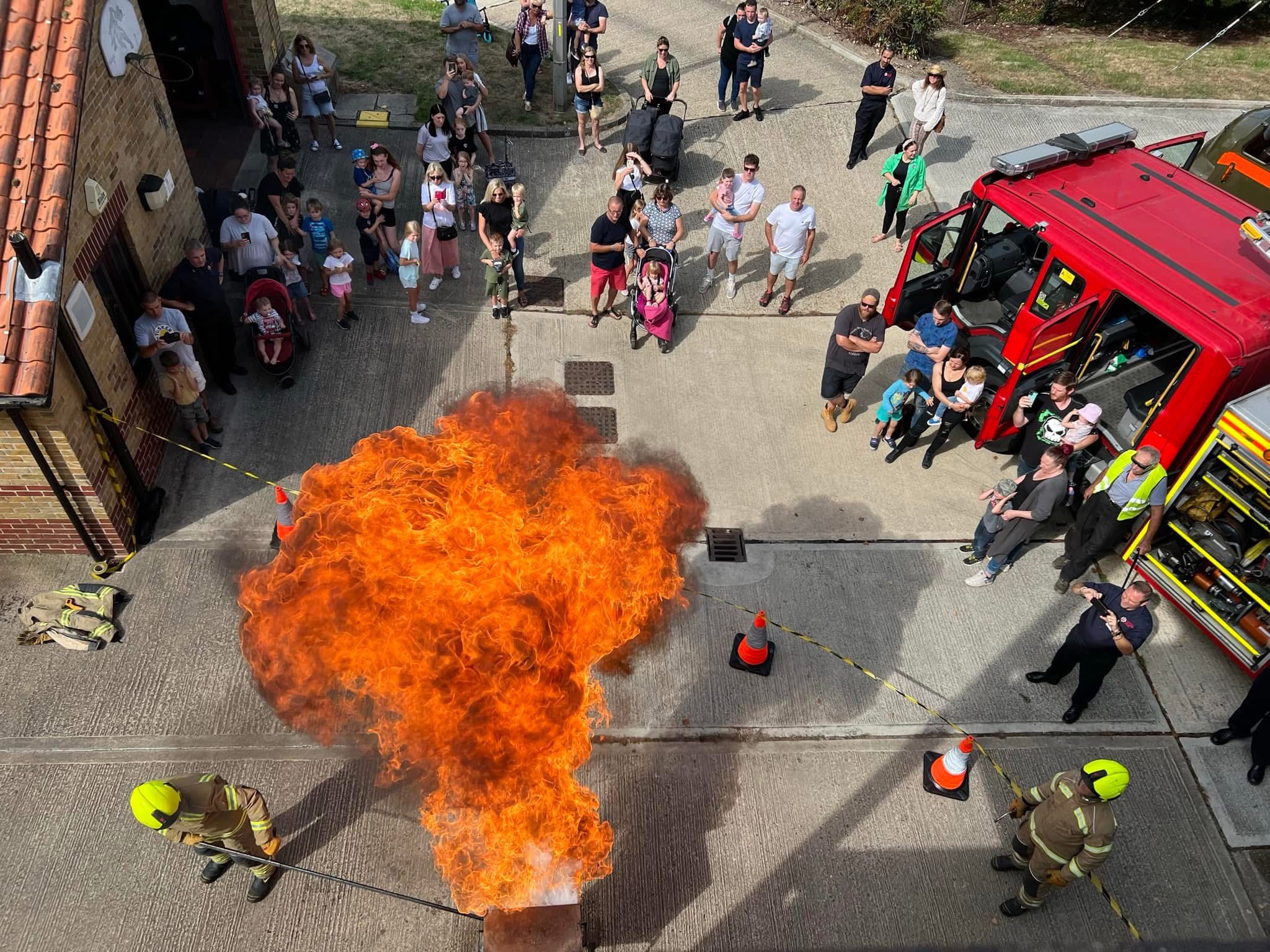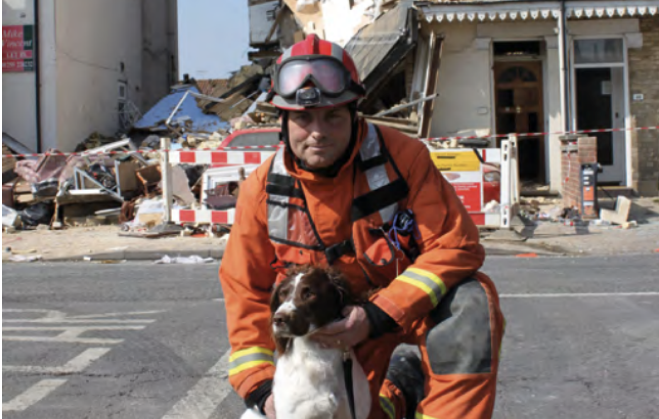Death by Fire
For many years it has been the fundamental firefighters’ philosophy, of all nations, to protect and save lives, primarily from the scourge of fire. Nevertheless, there have been very rare occasions when this philosophy has been turned on its head. Inspired by the use of fire weapons in the 1904-5 Russo- Japanese War, Bernhard Reddemann (the former chief officer of the Posen fire brigade and army reservist) began experimenting with ways to deliver fire to the enemy by means of a flame-throwing weapon. By 1907 he was experimenting with fire engines to propel water onto fortifications at Posen in an attempt to simulate the delivery of burning liquid onto a target. He considered his experiment to be a success which spurred him on to convert other firefighting devices, possibly hand pumps, into prototype flame throwers.
In 1914 he worked with the Berlin engineer Richard Fiedler who had also been working on flamethrowers and had had his designs accepted by the German army in 1912. Fiedler’s design was somewhat more effective than Reddemann’s, employing heavier oil rather than petrol and canisters of nitrogen and hand pumps to propel the fluid. There were two variants; the large version(Grosserflammenwerfer) operating in the Siege Train which was first used at Malancourt against the French on 26 February 1915, and then on 30 July of that year against the British at Hooge near Ypres; the other being a smaller type in backpack form (Kleinerflammenwerfer) carried by one man and ignited by another, thus requiring a crew of two to operate them. Flamethrowers really came into their own in 1916 at Verdun when they were used, en masse, against French positions.
The German army was never slow to recognise talent amongst its more junior officers and would assign such officers roles and responsibilities that often far exceeded the rank they held at the time. For example Lieutenant Colonel George Bruchmuller, one of the Great War’s most brilliant artillery tacticians, was responsible for the development of German artillery tactics at Army Group level. Major Max Bauer had the responsibility for the development of heavy artillery and mortars including the fortress-busting 42cm mortars nicknamed “Big Berthas”. Colonel Friedrich von Losberg was the foremost German expert on Defensive Warfare responsible for strategic planning across three armies. Those who have visited the battlefields around Ypres (now Ieper) will almost certainly have seen some of his fortifications. Amongst this illustrious group of officers was the young Captain Willy Rohr responsible for the development the infamous Sturmbataillons – shock troops otherwise known as stormtroopers who created such havoc during the initial phase of the German 1918 spring offensive (Kaiserschlacht).
Captain Reddemann fell squarely into this group of talented and innovative officers. He was tasked by the German High Command, not to develop the flamethrower, but to exploit its use tactically and integrate it, primarily, into infantry formations. Reddemann recruited 48 combat engineers, many of whom were ex firemen, and formed the Flammenwerfer Abteilung which many felt was his independent “private army”.
Captain Bernhard Reddemann: note the “Death’s Head” cuff insignia worn then by flamethrower troops (adopted later by the SS).
Kaiserscross.com
By 1915 Reddemann’s “private army” had expanded exponentially to a staggering twelve companies. The policy to recruit ex fireman who had conquered a natural fear of fire and could understand and operate equipment designed to deliver liquid onto a target continued. Additional personnel were attached to the organisation including: research, workshop and instructional staff. It is not unreasonable to assume that these specialists would have had similar roles in pre-war fire brigades. These specialists were undoubtedly influential in the further development of Fiedler’s flamethrower. For example, crews of two were dispensed with when automatic spark igniters were introduced. Fiedler’s heavier oil mixture, impressive as it was, produced huge amounts of dense black smoke which provided a magnificent artillery target was replaced by a cleaner and less obtrusive fuel mixture. Larger models were gradually phased out in favour of smaller backpack versions. This was perhaps the most significant development as they were better suited to mobile warfare which ultimately transformed men of the Flammenwerfer Abteilung into elite troops, but at a price as they were naturally singled out, by the enemy, as primary targets, as were machine gunners. They effectively became marked men. Conversely one of the flamethrower troop’s main objectives was the eradication of enemy machine gun positions. Flammenwerfers would attack in squads of two or three, running from shell hole to shell hole in short bursts thus affording little opportunity to be picked off. If longer dashes were the only option, one of the squads would fire a short burst of flame to keep the enemy’s heads down.
Additionally, the flamethrower crews would be accompanied by grenade throwers to protect them from short-range counter attacks. Given the remarkable tactical similarities with assault battalions it is not surprising that Reddemann’s Flammenwerfers became the natural bedfellows of Willy Rohr’s stormtroopers and it would be his grenadiers who would provide this defensive cover. All in all, a very effective offensive doctrine was established. So much so that out of a total of 653 flamethrower attacks during the Great War only 18% failed to gain their objectives. The effectiveness of the flamethrower was often played down for one reason or another. A British officer commented:
“...in my experience the effective range of the flammenwerfer is very limited, and the man who manipulates it as often as not is shot or bombed by our fellows... . The actual cases of burning by Devil’s fire have been very few.”
This view was, to a degree, reflected in the British position not to adopt the portable flamethrower as a standard weapon system in the Great War, although limited use of large fixed forms was tried. The French were more enthusiastic and developed a light portable flamethrower produced by a French cigarette lighter manufacturer designed by Captain Schilt an ex French fireman – who in turned formed seven flamethrower companies – Compagnies Schilt.
The flamethrower became one of the most feared weapons of the Great War, so much so that it was forbidden to be used by the post-war German army. Needless to say, after the rise of Hilter and his hatred of the Treaty of Versailles its fortune was resurrected and was widely used by them in the Second World War. The German form of flamethrower was adopted by the United States Marine Corps and used to marked effect again Japanese forces during the Pacific Island Hopping campaign. A totally different and even more devilish form of delivering liquid fire was developed by the British army when Churchill tanks, renamed Crocodiles, were modified as flamethrower tanks.
It is interesting to note that the aforementioned German policy to recruit men from fire brigades into the services to create fires, was diametrically opposed to that of the London Fire Brigade during the Great War, to recruit men from the services to put fires out; altogether a far more humane and valid response to the “Devil’s only friend” than that expounded by both Reddemann and Schilt during the Great War.
Death by Fire - “Fire is the Devil’s Only Friend”
By Mick Ford
Sources:
Harvey, A.D. ‘Tanks and Storm Troopers’, Stand To! The Journal of the Western Front Association, (June 2020)
Flammenwerfer! The Devil’s Pioneers, www.kaisercross.com
Ritcher Sophie, Dreseden. ‘The Soldiers at the Western Front – The use of Flamethrower’, www.hi’uni-stuttgart.de (2015)
Mclean Don. America Pie (1971)


